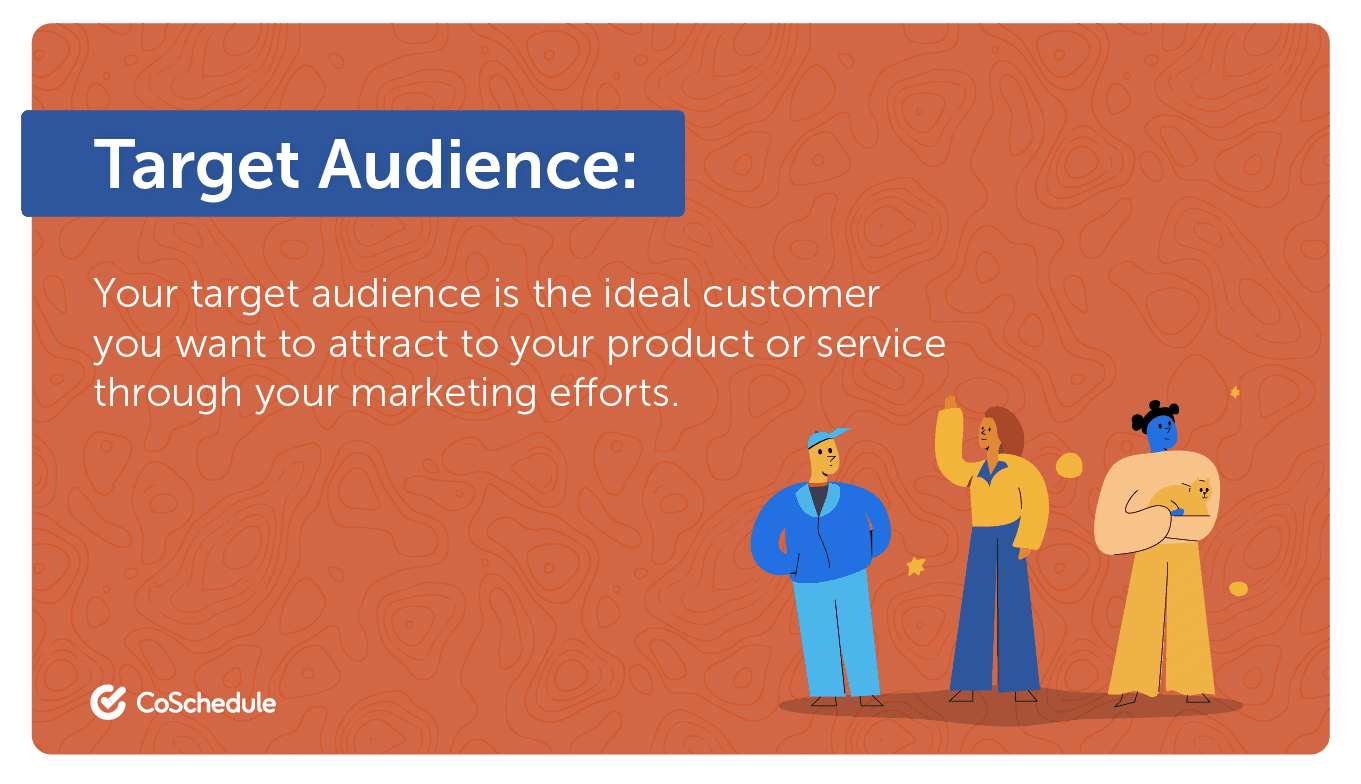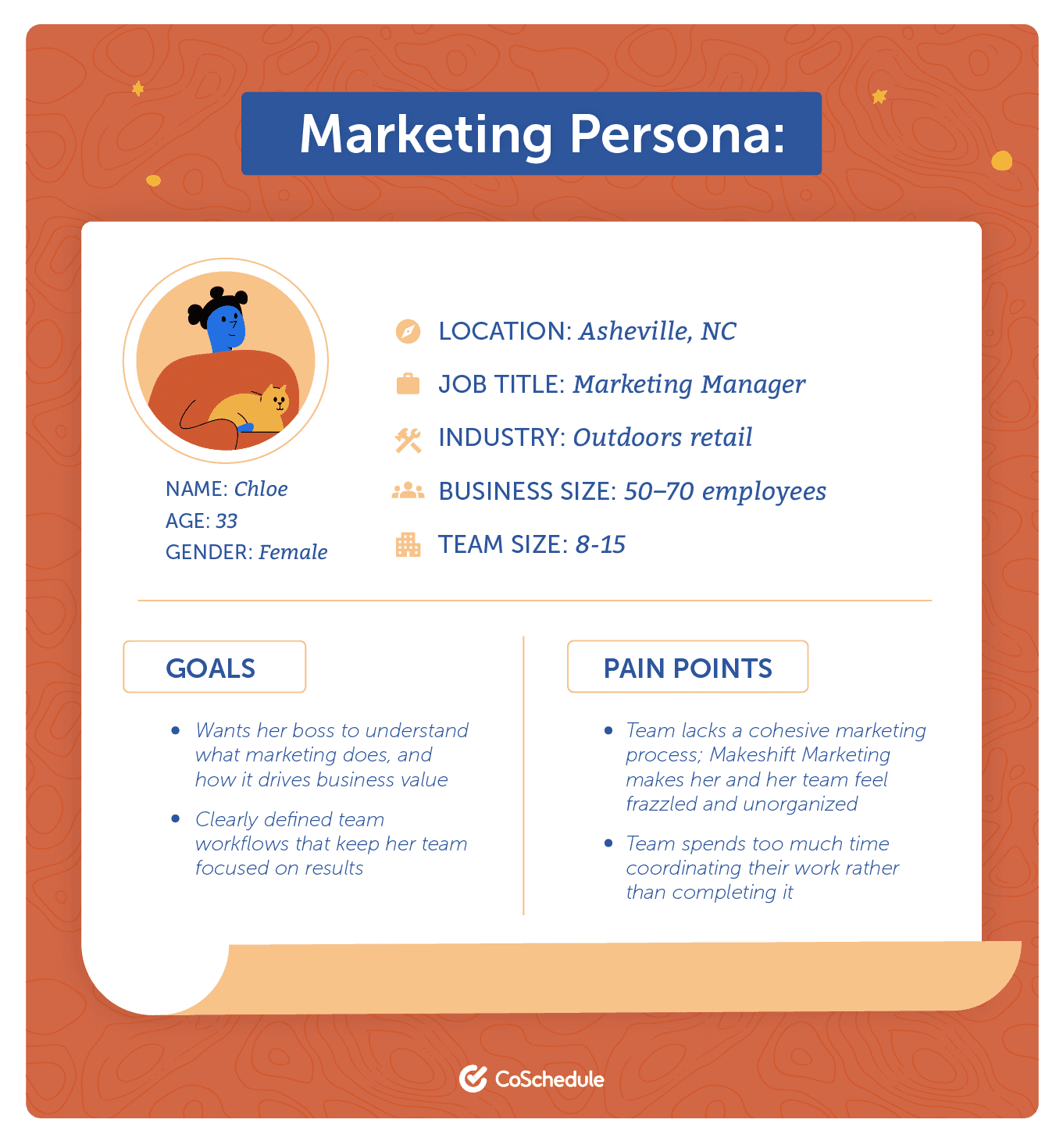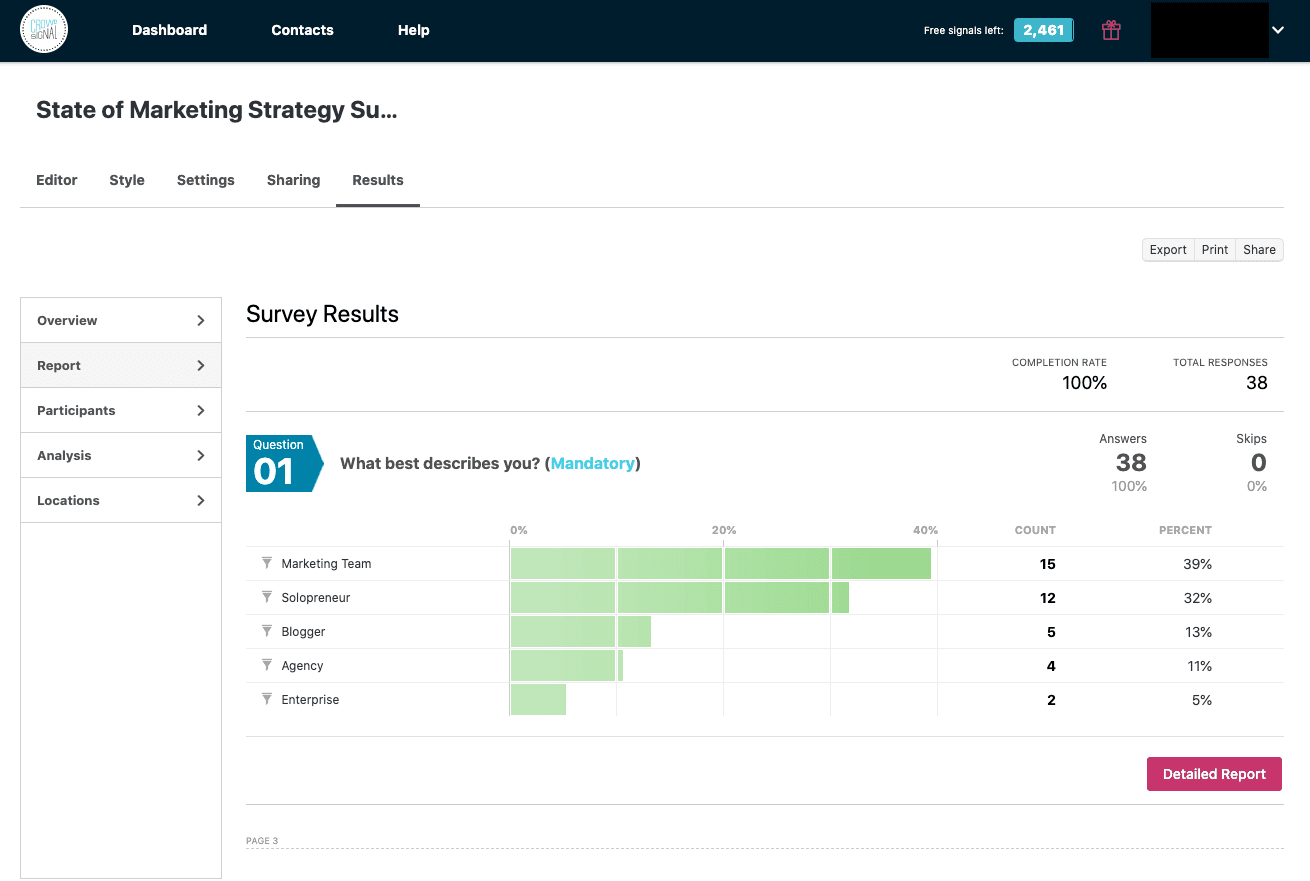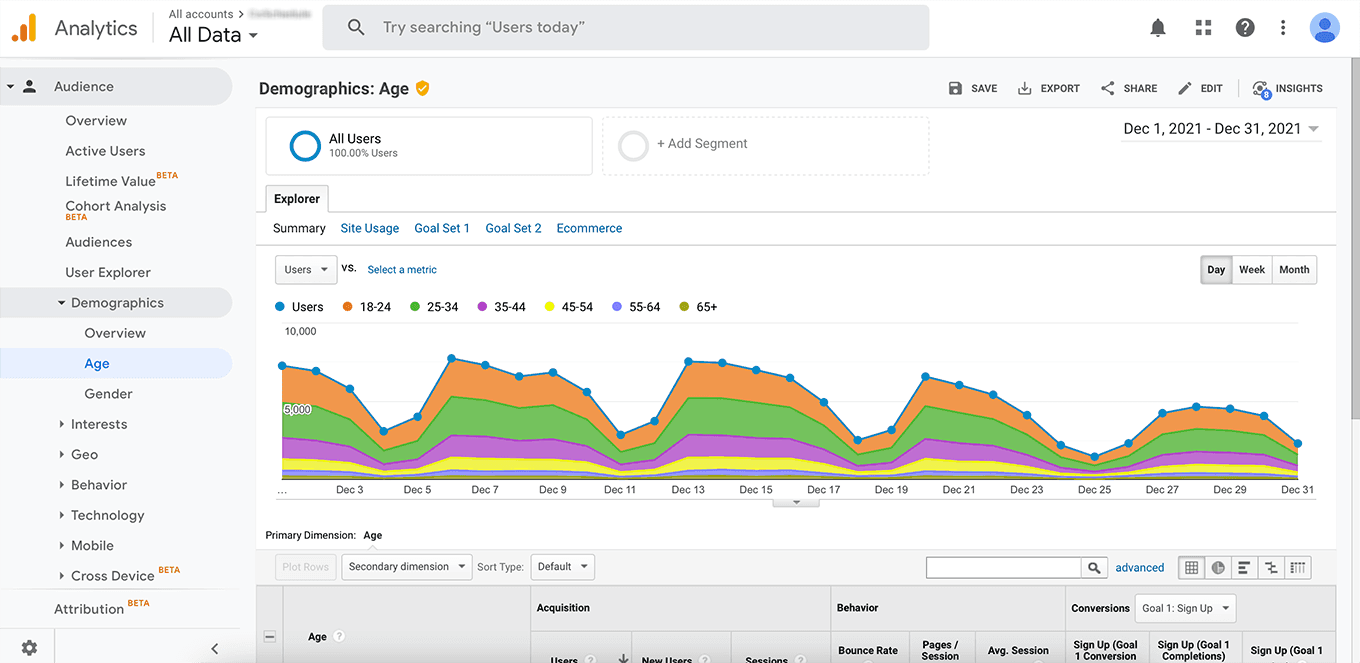When it comes to marketing your product, company, or content, it’s important that you research information about your target audience. The people you are reaching with your marketing strategy are not all the same; each and every one of them has their own niche, personality, and passion.
This begs the question: What exactly does a description of your ideal customer look like?
[guide_content_upgrade_shortcode]
What Is A Target Audience?
Your target audience is the ideal customer you want to attract to your product or service through your marketing efforts.

The practice of understanding your target audience, the words they use, the benefits they enjoy, and why they hire your product or service will help you create content that connects.
This knowledge becomes actionable for your marketing team when you document it in the form of a marketing persona.
What Is A Marketing Persona?
Your marketing persona is a document that details your target audience’s who, what, when, where, and why, in addition to understanding general demographics information such as gender, job title, job function, business size, team size, needs, pain points, and challenges.

Define Your Target Audience
The goal here is to attract more customers who have similar goals, aspirations, pain points, and challenges as your best customers.
Begin by asking yourself:
- Who are our existing best customers?
- What qualities do these customers share?
- What caused these customers search for a solution like our product or service?
- Why did they hire our product or service?
- What do these customers gain by choosing us (instead of the competition)?
From here, craft your target audience statement:
{Insert your company} creates content to attract {insert target audience} so they can {insert desired outcome} better.
For example, this is what the target audience statement may look like for CoSchedule:
CoSchedule creates content to attract professional marketing managers so they can get organized better than ever.
This framework will help your marketing team craft effective content in the meantime. So use this process to help you start.
But you can also dive further into audience research to document your target audience in the form of a marketing persona much more robustly.
Recommended Reading: How To Craft An Effective Keyword Strategy
Launch A Customer Survey
The best way to reach an audience like your existing best customers is to understand why your current customers hire your product.
Use a tool like SurveyMonkey or Crowdsignal to ask your customers questions like:
- What is the primary reason you use {insert your product or service}?
- Why did you choose {insert your product or service} over other solutions?
- What is the most significant difference {insert your product or service} is making for you today?
- If you didn’t use {insert your product or service}, what would you most likely use instead? / What would you likely use as an alternative if {insert your product or service} were no longer available?
- How would you (briefly) describe {insert your product or service} to someone else?
- What is the single greatest benefit {insert your product or service} provides? / What is the primary benefit you have received from {insert your product or service}?
- What prompted you to look for a solution like {insert your product or service}?
- How many people work at your business?
- How many people work on your team?
- What blogs or publications do you enjoy?

Dissect the results for trends and commonalities in word choice, pain points, challenges, benefits, and emotions, and include them in your marketing persona template.
The easiest way to distribute that survey link is via email. Here’s an email template you can copy + paste into your email service provider to easily send to your customer list:
Subject line: Quick favor?
Hi, {insert customer name}.
Thank you for joining us at {insert your company name}. Most of our customers tell us that with {insert your product or service}, they {insert primary benefit}. I hope you have the same success!
Right now, I want you to do one thing:
Take this quick survey to help me understand why you signed up for {insert your product or service}. It’s 2 minutes. No joke.
I’m asking because knowing what made you sign up is really helpful for us in making sure that we’re delivering on what our customers want.
Thanks!
{Insert your name}
P.S. You just found the best {insert your unique product or service category} around. I hope you enjoy it and decide to stick around!
Write Your Marketing Persona
Open your marketing strategy template spreadsheet and click on the Marketing Persona tab.
Fill in the Target Audience Statement in cell B5. As a reminder, that statement looks something like this:
{Insert your company} creates content to attract {insert target audience} so they can {insert desired outcome} better.
Use Google Analytics to understand your existing audience’s demographics such as age and gender.
Cruise to the Audience and Demographics area and select Gender to see who you primarily attract. Fill in cell B11.

Then click Age in the Demographics area. Fill in cell B12.

From here, I like to do some simple math to find the Persona name.
For example, let’s say CoSchedule’s primary visitor is a 29-year-old female. The current year minus her age would suggest she’s born in 1989. You can use a website like BabyNames.it to find the most common girl name of that year, which happens to be Jessica for our example.
Enter in your persona name in cell B8.
Fill in the Job title and Job responsibilities fields based on your understanding of the ideal customer in cells B9 and B10, respectively.
Use the data you gathered from your customer survey to enter the Company size and Team size (applicable if you’re a business-to-business marketer).
Use Google Analytics once again to find the location where the majority of your audience is from. In Audience, select Geo and Location to drill into the geography.

Fill in cell B17.
Then use the information from your customer survey to flesh out the rest of the marketing persona in the Emotion area, cells B20-25:
- Reason they search for a solution
- Why they choose your product or service
- #1 benefit they gain from your product or service
- Closest competitors they’d consider
- A customer quote (written using common words)
- Favorite blogs + publications they enjoy
Once you have a rough draft of your marketing persona prepared in the marketing strategy template spreadsheet, you may opt to transfer these thoughts into the designed marketing persona PowerPoint deck also available in the marketing strategy template kit you’ve already downloaded.
^^^ This gives you a nice visual way to introduce your team to your marketing persona.
Congrats! You just defined your target audience and wrote a marketing persona to help you attract more folks to your brand that are like your existing best customers!